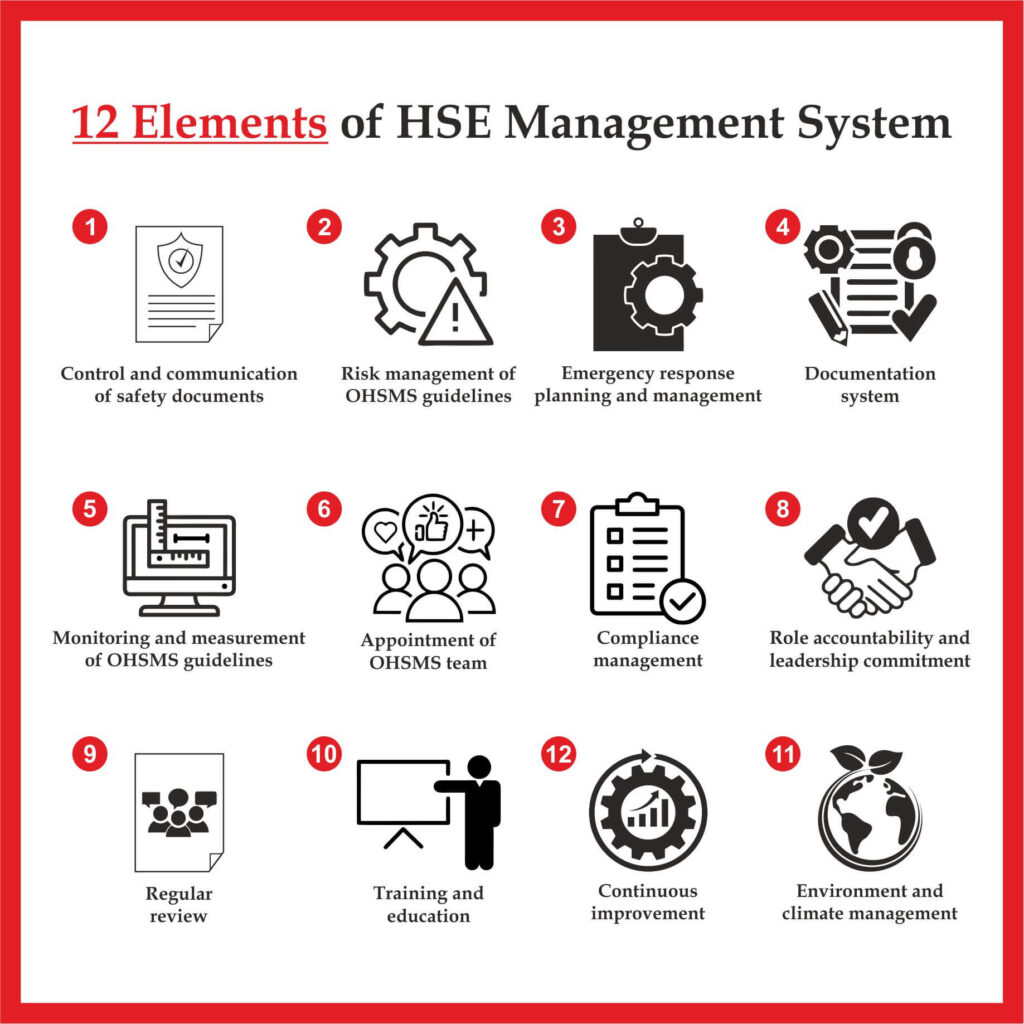The whole world is talking about and emphasising the significance of HSE; HSE stands for Health, Safety, and Environment. It’s a broad discipline that includes practices, policies, and procedures to protect employees, visitors, contractors, and the environment. Moreover, the S in HSE stands for safety, which aims to reduce hazards, prevent accidents and injuries, and promote sustainable practices.
What are the standards for Health and Safety?
ISO 45001 is an internationally recognised and widely used Occupational Health and Safety Management System (OHSMS). The standard aims to reduce and eliminate work-related injuries, accidents and diseases to protect employees and visitors. The standard applies to any organisation, regardless of size, industry, or geographic location. Moreover, the standard is effective for higher-risk industries like construction, manufacturing, oil and gas, mining, and agriculture.
Evolution of ISO 45001 Certification
The International Organisation for Standardisation (ISO) has developed the ISO 45001:2018 certification. The standard was proposed in 2007; however, it was published in 2013. So, the first published version of the standard was ISO 45001:2013 certification, and the standard was last updated in 2018.
OHSAS 18001 was the first occupational health and safety standard published in 1996. Later, with the introduction of ISO 45001, the Occupational Health and Safety Management System (OHSMS) replaced OHSAS.
Elements of ISO 45001:2018 Standard

What is HIRA in the ISO 45001 standard?
Occupational Health and Safety Management System (OHSMS) is a widely used certification to ensure the safety and well-being of employees in an organisation. The ISO 45001:2018 standard has a separate clause, Clause 6.1.2.1., to help organisations create a safe and healthy work environment. Moreover, it requires an organisation to identify and eliminate the potential work-related risks and hazards to address them proactively.
Hazard Identification and Risk Assessment (HIRA) offers a systematic method for evaluating work-related hazards and risks. Moreover, it helps organisations to frame comprehensive metrics for identifying hazards and implementing risk-management strategies.
Purpose of Hazard Identification and Risk Assessment (HIRA)
- It helps organisations recognise all those factors that can cause injuries to workers.
- The assessment determines potential threats and opportunities to evaluate their severities and address them accordingly.
- It assesses existing controls and safety measures in the management system to understand their effectiveness.
- The assessment recommends ISO 45001 controls and measures to manage the potential hazards.
Factors that influence Hazard Identification and Risk Assessment (HIRA)
The following factors can impact the Hazard Identification and Risk Assessment (HIRA); these are:
Workplace or Process Changes: Any changes to the workspace, tools, or procedures could introduce new risks, calling for an evaluation of the HIRA.
- Occurrence of Incidents: Any incidents or near-misses at the workplace can set off an expeditious HIRA review to pinpoint and rectify the root causes.
- Adopting Industry Best Practices: A review of the HIRA ensures compliance with current standards to modify occupational health and safety laws to improve risk management techniques.
- Feedback from Employees: Employee concerns or recommendations regarding potential risks can prompt a thorough review of the Hazard Identification and Risk Assessment (HIRA) to ascertain their validity.
Conclusion
An efficient Occupational Health and Safety Management System (OHSMS) must include the HIRA (Hazard Identification and Risk Assessment) process. It helps businesses to eliminate possible risks in the workplace by evaluating risks and creating suitable policies.
source - https://www.siscertifications.com/what-is-hira-in-iso-45001-certification/

Comments
Post a Comment